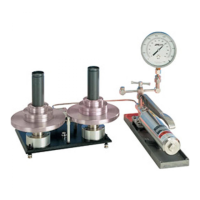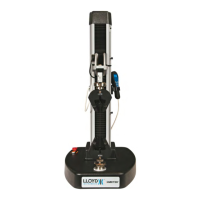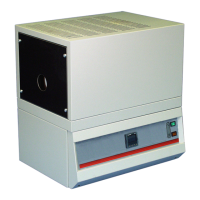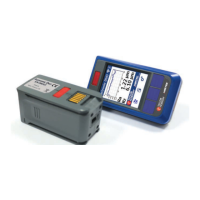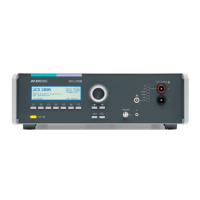N = Clear Both Tension and Compression Peak Values
This ASCII command clears both the tension and compression peak values
simultaneously.
Type character N, then ENTER.
Clears both tension and compression peaks from the memory.
P = Request the Peak Tension Load Value
This ASCII command is used to request the peak tension load value. When requested,
the computer will display the peak load value.
Type character P, then ENTER.
This sends the peak tension load value.
Q = Request the Load Cell’s Capacity
This ASCII command is used to request the capacity of the load cell.
Type character Q, then ENTER.
This sends the capacity of the load cell.
R = Zero (Reset) the Load and Distance Values
This ASCII command is used to reset the measured load and distance values to zero.
Requesting the command R will zero the load (L) and distance (D) values on the CS
Console.
Type character R, then ENTER.
The Load (L) and Distance (D) result displayed at the CS Console are both returned to zero.
S = Request Load Values Continuously
This ASCII command is used to request that load values be continuously transmitted
to the computer. Select command B to stop the continuous transmission.
Type character S, then ENTER.
The Load (L)
values are displayed continuously at the computer.
V = Request Lower Limit Value
The ASCII command V is used to send the lower load limit value. The lower load limit
value was set using the G command.
Type character V, then ENTER.
The lower load limit value (G) is displayed at the computer.
W = Request Upper Limit Value
The ASCII command W is used to send the upper load limit value. The upper load limit
value was set using the H command.
Type character W, then ENTER.
The lower load limit value (H) is displayed at the computer.
X = Request Load Value
The ASCII command X is used to send the current load value. The computer will
display the current load value when the X command is entered.
Type character X, then ENTER.
This sends the instantaneous load value
118 CS User Manual
